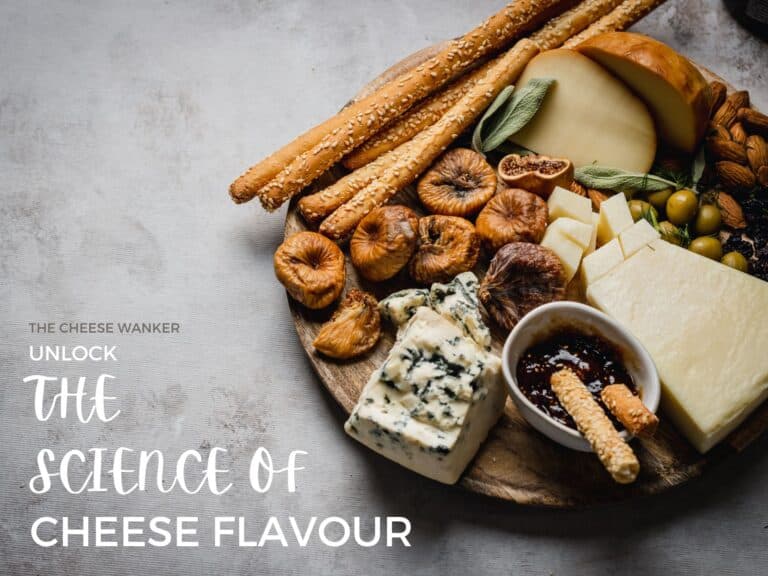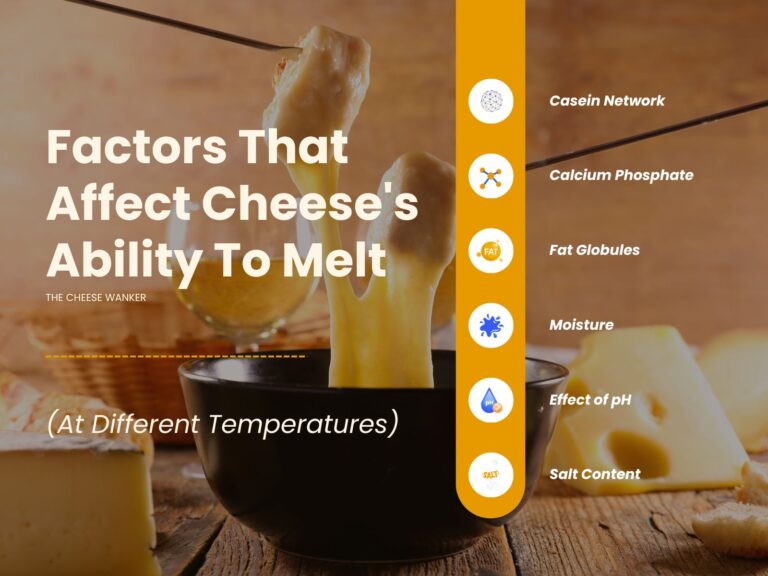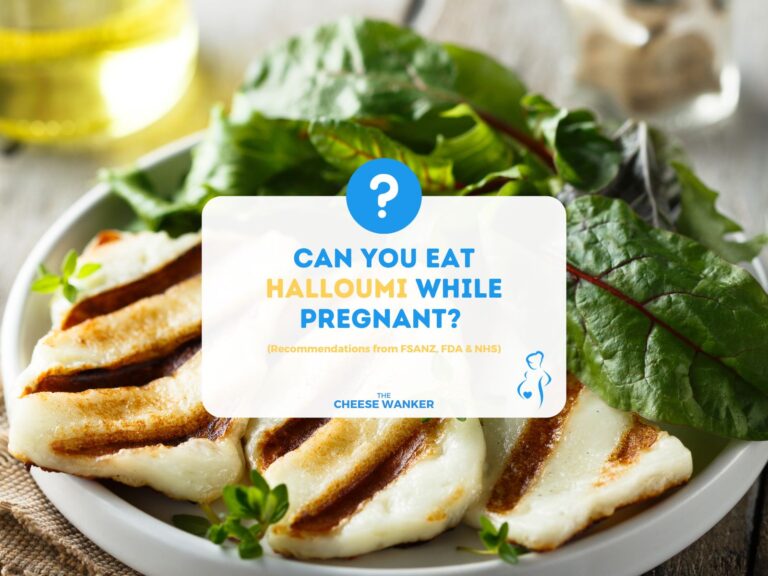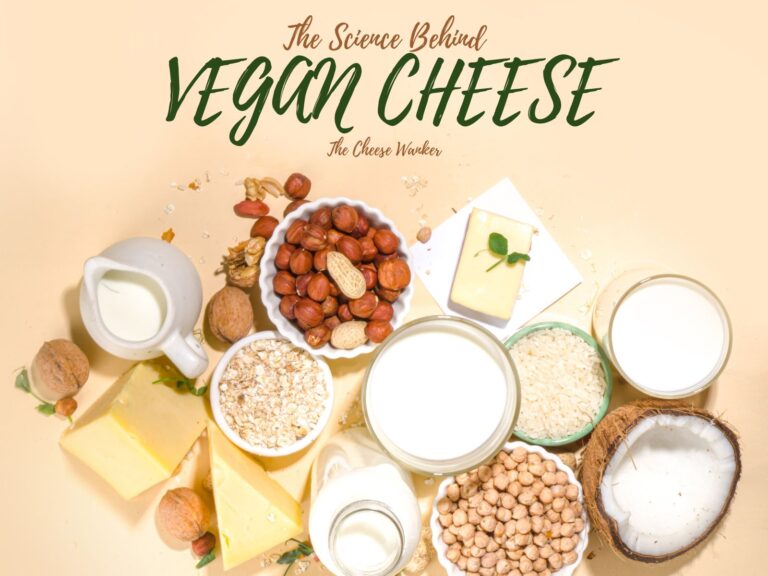Cheese enthusiasts and grill-masters alike have long marvelled at the culinary enigma that is Halloumi. This Cypriot cheese stands out for its unique ability to withstand high heat without succumbing to the melty fate that befalls many of its cheesy counterparts. In this exploration, we dive into the scientific intricacies that explain why Halloumi doesn’t melt when heated.
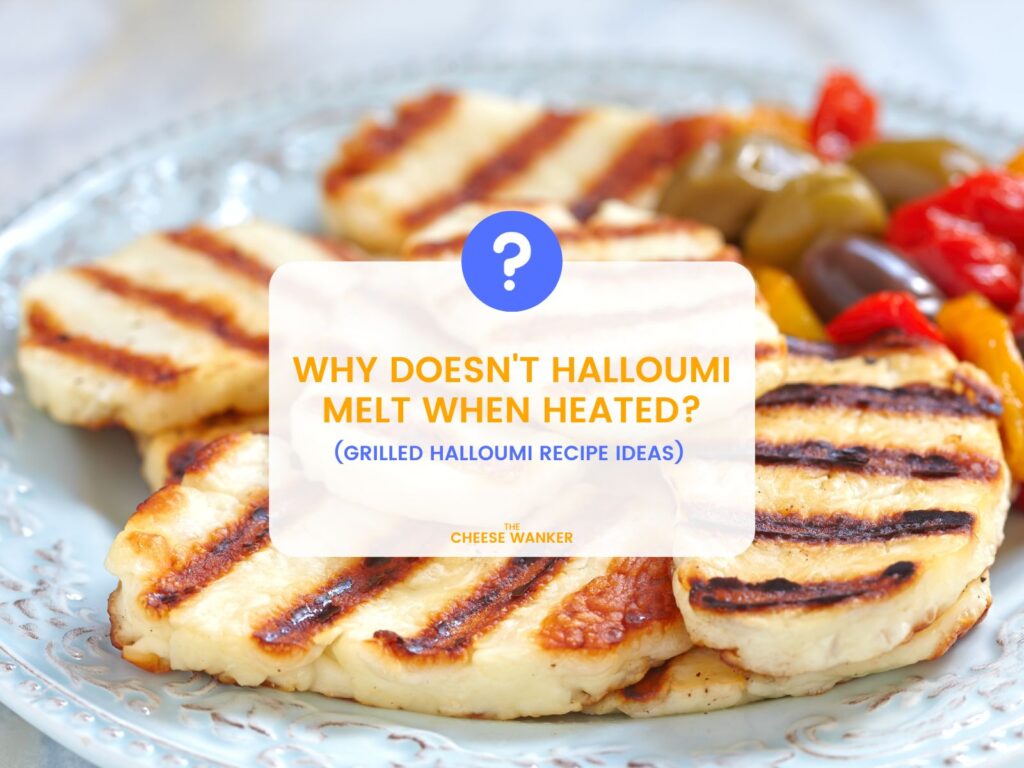
SEE ALSO: The reason why some cheeses melt when heated (and others don’t) →
Why do most cheeses melt when heated?
Most cheeses melt when heated due to the fundamental changes that occur in their molecular structure under the influence of heat. Central to the meltability of cheese are the bonds between casein and calcium phosphate within the cheese.
Bound calcium phosphate acts as the glue that binds casein molecules together, forming stable aggregates within the cheese matrix. This structure provides the foundation for the cheese’s physical integrity, influencing its ability to withstand heat without immediate collapse.
When most cheeses are subjected to heat, those casein-calcium bonds weaken. And the cheese’s texture softens leading to melt and/or stretch.
Additionally, the presence of fats in cheese plays a significant role in its meltability. Fats contribute to a cheese’s ability to melt and stretch by diluting the casein network.
While the specifics may vary among different cheese varieties, these general principles highlight the universal factors that make most cheeses amenable to melting when exposed to heat.
You can learn more about why some cheeses melt when heated in our in-depth post here.
What type of cheese is Halloumi?
Originating from Cyprus, Halloumi is a semi-hard brined cheese renowned for its distinctive characteristics and culinary versatility. Crafted from a blend of goat’s and sheep’s milk, sometimes with the addition of cow’s milk, Halloumi boasts a firm, rubbery texture that sets it apart from other cheeses.
What makes this Cypriot cheese truly exceptional is its remarkable heat resistance; it can be grilled, fried or baked without losing its form, making it a chef’s delight. Moreover, the cheese is brined in a saltwater solution, infusing it with a salty flavour profile that appeals to many palates.
Why Halloumi doesn’t melt when heated
There are various factors that influence Halloumi’s behaviour when exposed to heat:
- Acidity levels (cheese pH)
- Extent of proteolysis
- Salt content
Let’s take a close look at each one of those to understand why Halloumi doesn’t melt when heated.
How does pH affect Halloumi’s meltability?
Firstly, acidity is a crucial factor in determining the melt properties of cheese, as it directly influences the retention of bound calcium phosphate in the casein structure. As we’ve already mentioned, calcium phosphate plays a vital role in “holding” casein aggregates together.
Cheeses with a higher pH (Halloumi’s pH is around 6) contain more bound calcium phosphate in the casein network. This abundance of bound calcium phosphate causes the caseins to be tightly “glued” together, resulting in reduced melt and stretch.
Extent of proteolysis in Halloumi
Proteolysis is the process of breaking down proteins into smaller peptides or amino acids during ageing in cheese. In some cheeses, this breakdown is facilitated by residual rennet or microbial activity.
The consequence of proteolysis is the fragmentation of the casein network, leading to a cheese that readily melts but exhibits limited stretch.
In the case of Halloumi, the cheese is dipped in hot whey during production. This kills off most of the starter culture bacteria and prevents further acidification of the cheese.
This production technique has two consequences: it reduces the acidity of the cheese (higher pH as discussed above), and it allows calcium phosphate to flow out of the cheese. As a result, Halloumi develops a strong, inflexible casein network.
And the direct consequence of this is a cheese that does not melt or stretch when grilled.
Effect of salt on Halloumi’s ability to melt
Finally, Halloumi is a very salty cheese. Indeed, a 100 g serving of Halloumi can deliver up to 1250 mg of salt (54% of the recommended daily intake).
Salt reduces the hydration of the casein network. In doing so, it can increase the amount of bound calcium within the cheese’s structure. As a result, cheeses that are high in salt tend to be firmer and are less likely to melt when heated.
Moreover, salt can inhibit proteolysis in cheese. Together, those two factors contribute significantly to Halloumi’s resistance to heat.
Best grilling recipes for Halloumi
Now that we understand why Halloumi keeps its form when heated, how can we put this to good use? By grilling it in a delicious recipe of course!
In this section, we explore three enticing grilled Halloumi recipes that showcase the cheese’s exceptional texture and savoury profile.
Halloumi and Veggie Kebabs
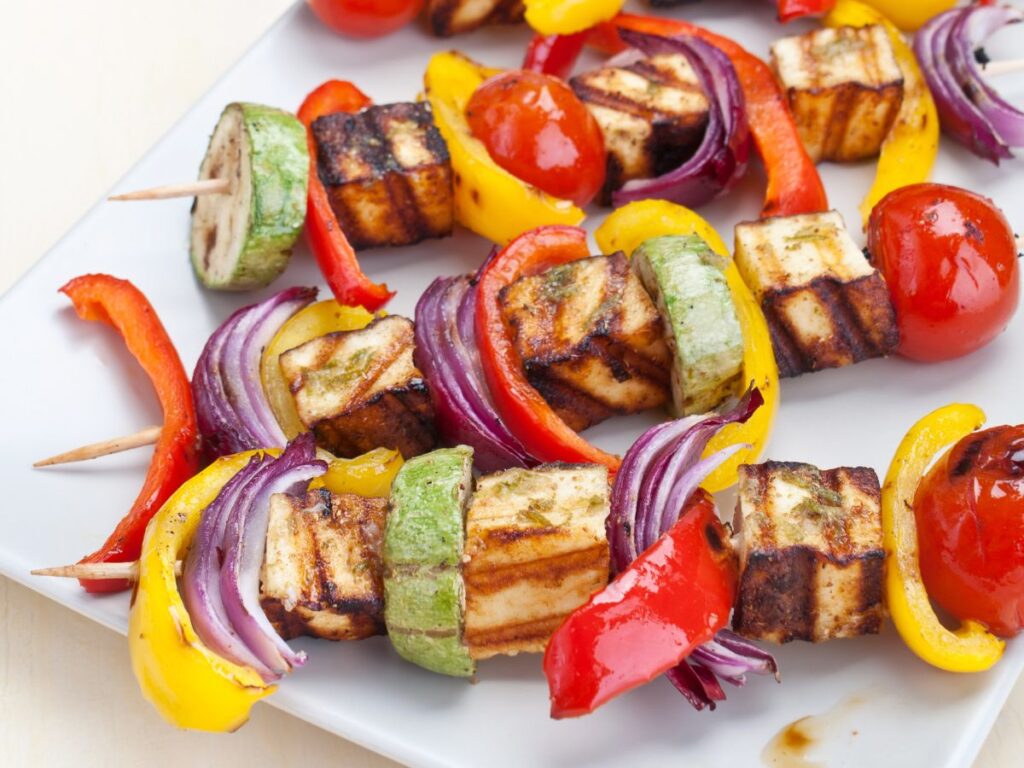
Create colourful kebabs by alternating Halloumi cubes with red and yellow capsicum (bell peppers), zucchini and red onion. Grill until the vegetables are tender and the cheese develops a delightful char.
Halloumi Burger
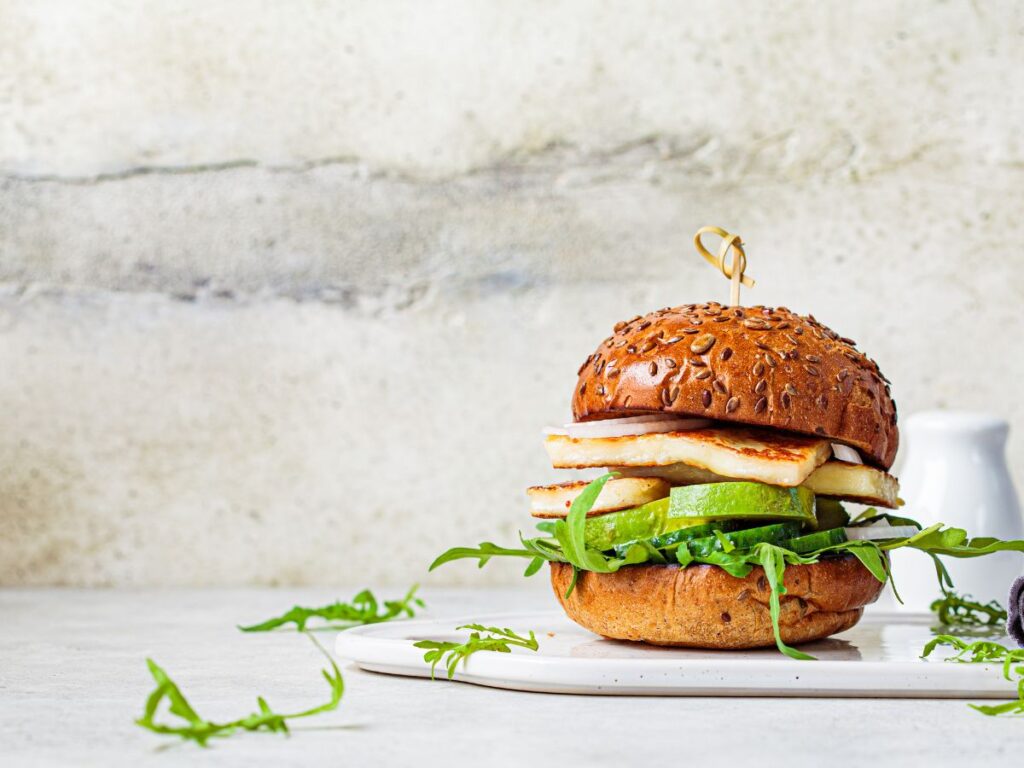
Replace the traditional meat patty with a thick slice of grilled Halloumi in your burger. Top with fresh rocket (arugula), avocado, sliced cucumber and white onions for a vegetarian delight.
Grilled Halloumi Salad
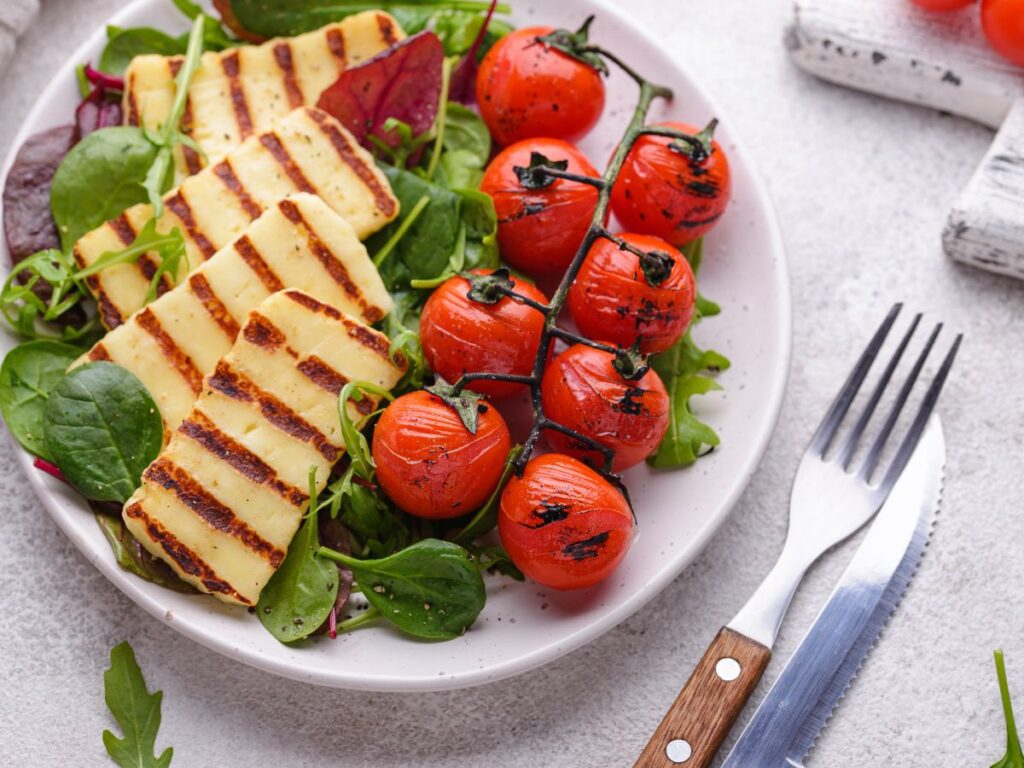
Toss grilled Halloumi slices with a mix of fresh greens, baby spinach and cherry tomatoes. Finish with a zesty lemon vinaigrette for a light and refreshing salad.
Conclusion
To conclude, the main reasons why Halloumi doesn’t melt when heated comes down to its low acidity, high salt content and lack of proteolysis.
While most other cheeses succumb to the heat, Halloumi’s resilience not only defies the norm but also elevates it to the forefront of grilling excellence. So, let your next encounter with halloumi on the grill be a celebration of science and flavour, as you savour each bite of this non-melting marvel.
Happy grilling!
References
Halloumi cheese-making, Encyclopedia of Food Microbiology: Edited by Richar K. Robinson
M. Huyen, C. Cadun, O. Berkay, A. Hayaloglu: Chemical composition and pH of Halloumi cheese
Journal of Dairy Science: Structure-function relationships in cheese
J.A. Lucey, P.F. Fox: Importance of Calcium and Phosphate in Cheese Manufacture
M. Johnson: The Melt and Stretch of Cheese Winter 2000, Volume 12, Number 1
P. Polowsky: Melt and Stretch 9/20/2021
Woodhead Publishing Series in Food Science, Technology and Nutrition, Cheese Problems Solved: Salt in Cheese
